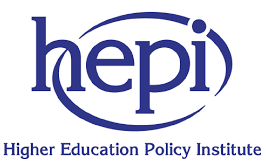Breaches in student academic integrity include, but are not exclusive to, acts such as cheating, plagiarism, and others which gain an unfair advantage over other students. Previously, the problem was persistent but manageable for the academic world. However, emerging technologies like Artificial Intelligence, Machine Learning, and sophisticated search algorithms have now revolutionised the way students gather information and complete assignments. These tools can significantly enhance learning experiences but they also make academic dishonesty more accessible and more attractive.
The threats from such emerging technologies stretch beyond solely the academic conduct issue. Most UK HEIs do not yet use nascent or ‘unproven’ plagiarism checker tools that may detect AI-generated text. However, academics are generally able to identify the use of AI-generated text due to their subject knowledge, the difference in the tone of the text and the distinctive feel of AI-generated discourse. The suspicion of misconduct without support and reinforcement from approved AI detection software often ultimately requires an oral examination or ‘viva’ to gather evidence on the originality of the work. This absorbs significant time from both academic and administrative staff. The recent exponential increase in academic integrity breaches due to the use of generative AI has resulted in rampant, unnoticed costs.
We are currently conducting a longitudinal study going back to 2019 on academic misconduct and the circumstances surrounding occurrences. Our study suggests there are direct and indirect costs associated with processing, preparing, investigating, recording, and reporting a single misconduct case that requires viva. The direct cost is based on our examination of 2075 cases of academic dishonesty since 2019 and results show it costs 56 minutes of academic time and 106 minutes of administrative time per student per case. These figures include an academic identifying the case, reporting it to the Academic Integrity Officer (AIO) (or equivalent), AIO then processing it and potentially inviting students for a viva, conducting the viva and completing post-viva reporting. Usually, a viva is 30 minutes long and requires the presence of an academic, an AIO as chair, an administrator for recording the proceedings, a Student Union representative and the student. Previously the cost of academic and administrative time, in this context, was neither calculated nor recorded within HEIs due to the infrequency of these occurrences.

